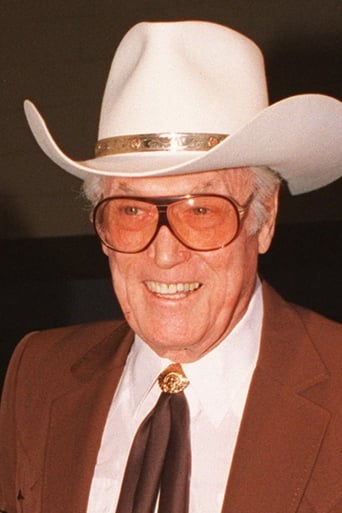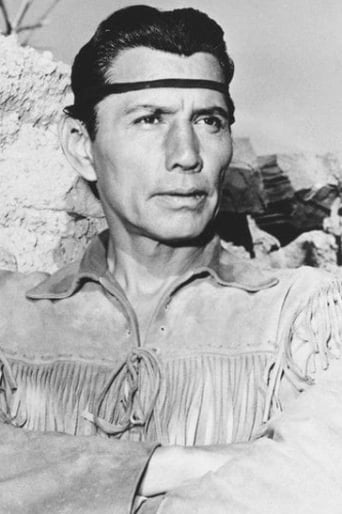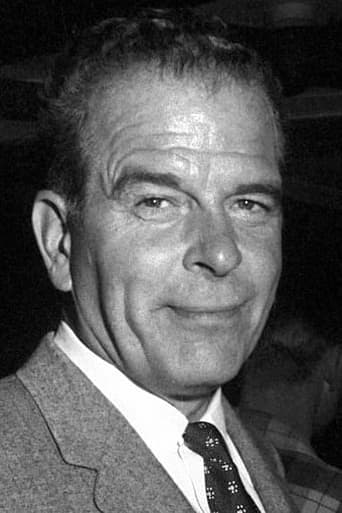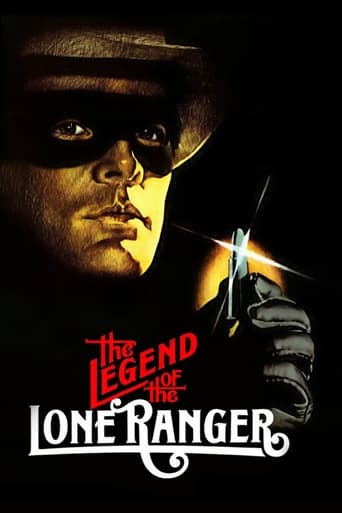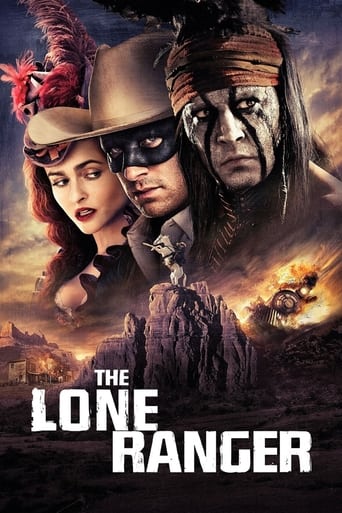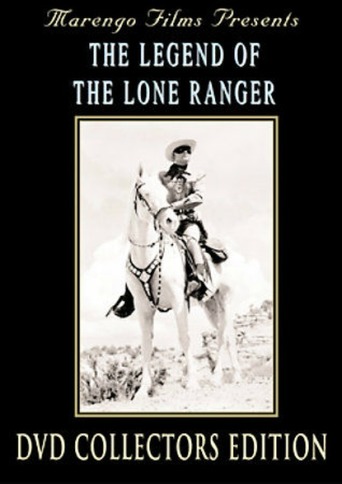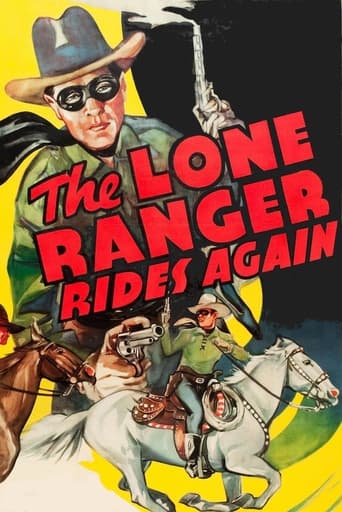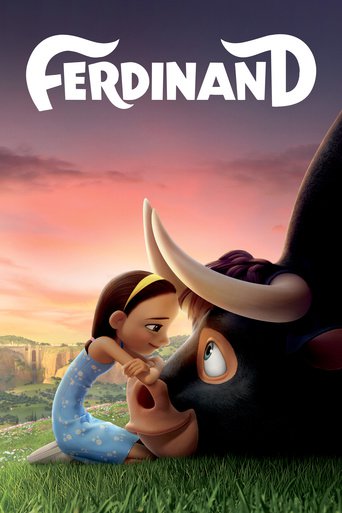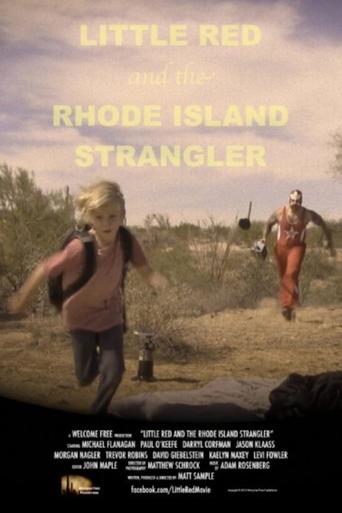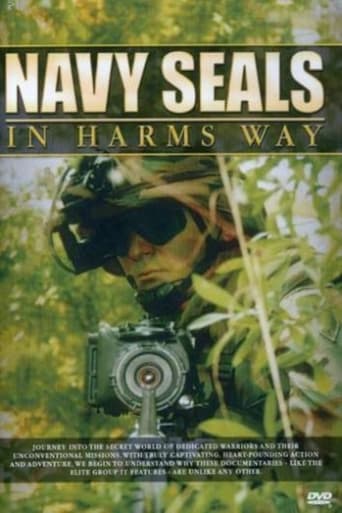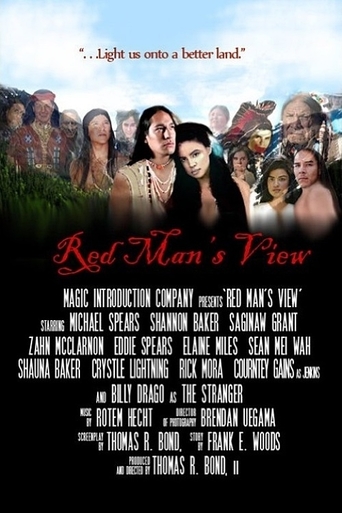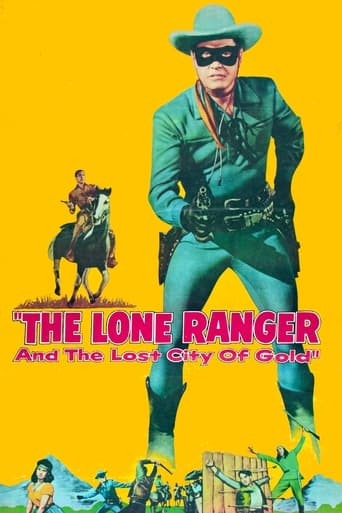

The Lone Ranger and the Lost City of Gold (1958)
Three Indians were brutally murdered by a gang of hooded outlaws. Each one possessed a silver medallion, which were sections cut off from a large silver plaque which served as a treasure map to a secret location where a large amount of gold is reputedly stashed. Two more medallions are unaccounted for, and the The Lone Ranger and his friend Tonto must use all their resources to intercept the gang, prevent further carnage and save the owners of the medallions.
Watch Trailer
Cast
Similar titles
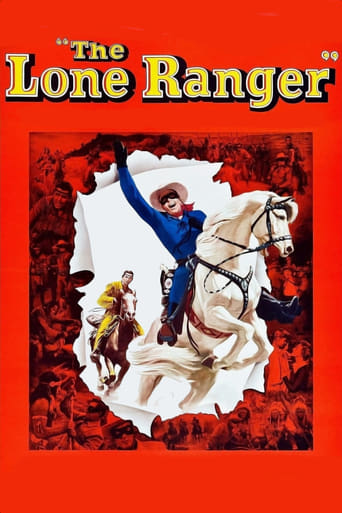
Reviews
Fresh and Exciting
Better Late Then Never
Although it has its amusing moments, in eneral the plot does not convince.
True to its essence, the characters remain on the same line and manage to entertain the viewer, each highlighting their own distinctive qualities or touches.
I really enjoy watching old movies/TV shows like this. They're cheesy and it's very easy for us to poke fun at the melodrama and obvious twists, but they're a throwback to when people weren't so critical of entertainment and just enjoyed seeing moving pictures, cowboys, Indians and a very clear good vs bad story. There was no anti-hero. No muddied waters. Good was good. Bad was ham-fistedly bad. And the day was always saved. The acting isn't great, but fits well with the melodramatic feel of the movie. I haven't seen a lot of the 1950's Lone Ranger TV show, but I was surprised at how little the Lone Ranger was used. He is a very one-dimensional character and all the development he ever gets is the opening credits where we hear about how he became the Lone Ranger and that He rides for justice. Maybe it's a good thing that he didn't have a lot of screen time, because you can't do a lot with that character. Instead, Tonto and other more dimensional side characters get more screen time. The movie deserves props for trying to handle a story line that deals a bit with racial relations between the Native Americans and the white man. It's a bit clumsy and wouldn't pass muster today, but it's cool to see such a story in 1958.
All new and a brand new thrills , the story of desperado hordes Kilgore's riders and the silver bullet that stopped the most savage Indian uprising ever to menace America's vast frontiers . The legend of the Lone Ranger is ¨the untold story of the man behind the mask and the legend behind the man¨ , it began on radio and made the transition to the small screen more than 50 years ago . This flick follows the adventures of the Ranger , his white stallion Silver and his American Indian pal Tonto, as they attempt to bring local criminals to justice. This cinematic adaptation deals with the Lone Ranger , here he comes , thundering up the West's deadliest treasure trail , blasting his way into the fabled city of gold . The Ranger accompanied by the Indian Tonto who rides with him, on Silver and Scout, throughout the West, doing good deeds and they dedicate their life to combat the evil that Cabendich represents. As they must prevent a war between Indians and ranchers disguised as masked riders in a dangerous adventure . The two heroes ride off in a cloud of dust under classic musical background composed by Rossini and shouting ¨Hi-Yo silver¨.¨The Legend Of The Lone Ranger¨ is crusader's last silver screen outing , The film contains action , thrills , great scenery with spectacular outdoors magnificently photographed in Warnercolor . This shows a campy and entertaining glimpse at nostalgic television series . It packs some fine action , adequate musical score , thrills and emotion ; as children as well as adults will undoubtedly love this film . Clayton Moore is good as the mysterious and righteous gunslinger, yet he shows have an endearing innocent charm , while Jay Silverheels is acceptable as his faithful sidekick Tonto. Jay Silverheels played as Tonto in the long series and two films , he also played Geronimo in ¨Broken Arrow¨(1950) . ¨The battle of Apache Pass¨(1951) and ¨Walk to proud land¨(56) . He performed about 30 Western from 1957 to 1973 in important roles such as ¨Brave warrior¨, 'The pathfinder¨, ¨Drums across the river¨, ¨Indian Paint and ¨Santee¨ . In addition , he played a cameo as Tonto in the parody ¨Alias Jesse James¨ with Bob Hope . The motion picture was professionally directed by Leslie Selander .Selander is generally considered to be the most prolific director of feature Westerns of all time, with at least 107 to his credit between 1935 and 1967. He realized his first feature in 1936, a western , genre in which he would not only excel but one where he would spent much of the rest of his career . Although Selander couldn't be deemed an "A"-list director, his movies had a professionalism and a verve that many of those made by his fellow B directors lacked . He also filmed detective thrillers, action/adventure motion pictures and even a horror film or two . He finished a close second with 106 horse operas helmed between 1917 and 1949 , for thirty years . He began with Western starred by Buck Jones and subsequently Hopalong Casssidy series performed by William Boyd . He moved to Republic where directed Rod Cameron in ¨Panhandle¨ and Stampede¨and started his collaboration to Tim Holt in 20 films . After that , he directed his best films as ¨Fort vengeance¨, ¨Arrow in the dust¨, ¨Town Tamer¨ and his final picture shot in Spain ¨Texas Kid¨. Originally created as a radio play in 1933 by George W. Trendle and well developed by Fran Striker . The Lone Ranger started off as an America radio show started in the 1930s and finally ended in 1954 . It began in a ¨Lone Ranger¨ serial (1938) , a program burdened by noisy action and starred by Lee Powell , being directed by William Witney and John English . It later expanded on to the big screen with 1938's "The Lone Ranger," 1939's "The Lone Ranger Rides Again," , a Republic serial in 15 whirlwind chapters with Robert Livingstone , Chief Thundercloud and Duncan Renaldo . The Lone Ranger was also a television series from 1948 through 1957 in which gained widespread notoriety on ABC television, as Clayton Moore donned the mask each week to fight crime and corruption in the old west and of course Jay Silverheels as Tonto . The Masked rider and Tonto in their first feature-length picture was directed by Stuart Heisler and co-starred by Lyle Bettger and Bonita Granville ; its following was this one , well co-starred by Douglas Kennedy , Charles Watts and Ralph Morris . Furthermore , new version by Willam A Fraker titled ¨The legend of the Lone Ranger¨ that wavers between irony and seriousness , starred by Klinton Spilbury and Michael Horse ; but the film bombed so badly at the box office , as the movie's star Klinton Spilsbury never worked in Hollywood again. The last appearance of The Lone Ranger was in 2003 for a two-hour special on WB Network starring Chad Michael Murray and Nathaniel Arcand . Jerry Bruckheimer Films has debuted a logo for the upcoming adaptation of The Lone Ranger , this is the last big screen iteration of the famous character . The tagline on the site reads, "The Legend Returns." Pirates of the Caribbean director Gore Verbinski has been contracted to filmmaking the classic TV show film , a blockbuster retelling for the big screen, and Johnny Depp is attached to play Tonto, the Lone Ranger's partner.
The Lone Ranger and Tonto have a long, complex history on the screen, but Clayton Moore and Jay Silverheels became forever identified with the roles thanks to the hugely popular "Lone Ranger" TV series, which ran from 1949 to 1957. That series inspired two full-length feature films, of which this is the second. A stretched-out version of a typical "Lone Ranger" episode would have been unbearably cornball, but this movie avoids that trap. Shot in color at some beautiful desert locations, it has a reasonably intelligent plot, plus action that's a bit more adult (i.e. violent) than in the TV series. It even has a theme: prejudice against American Indians.The story is about a series of killings of Indians by a gang known as the "Hooded Raiders." As in the TV series, the identities of the villains are clear to the audience fairly early, but in this movie their ultimate motive is not obvious at first. That allows the two heroes to do a bit of sleuthing, and the Lone Ranger gets a chance to doff his mask and don one of his trademark "disguises." (Even as a kid, I could see through these disguises easily, but the bad guys were always fooled.)Considering that this film was intended mostly for youngsters, its treatment of racial prejudice is pretty powerful for the 1950s. Two of the characters are especially interesting -- a bigoted lawman who abuses the people he's supposed to protect, and a doctor who conceals his partial Indian heritage in an attempt to "pass" as white. The Hooded Raiders are probably meant to suggest the Ku Klux Klan, though they don't really wear their hoods that much. (Their lax attitude toward their disguises strains credibility at times, but it's a forgivable flaw.)This is a better Western than I expected, and it's a fitting farewell for the Moore-Silverheels team. Though they later appeared in character for personal appearances and at least one commercial, this was the last time they played the Lone Ranger and Tonto in a real screen production.To cap it all off, "The Lone Ranger and the Lost City of Gold" has two of the great Hollywood beauties of the 1950s: Noreen Nash, as a wealthy schemer, and Lisa Montell, as an Indian maiden. For a lot of dads who were dragged to the theater in the 1950s, the sight of these two ladies must have been a pleasant surprise.
The Lone Ranger was one of my childhood heroes, and I never missed a chance to catch his adventures on Saturday morning re-runs during the mid 1950's. Somehow however, this film got by me until I had a chance to catch it today courtesy of my local library. I was struck by a number of elements during the story, as right from the start, you have a new Lone Ranger theme song before you hear the traditional opening used on the TV show. The adventure uses Tonto (Jay Silverheels) in a nicely expanded role, even though he takes his share of lumps throughout, getting beat up and shot more than once. Perhaps most interesting of all, the Ranger actually shoots to kill in a couple of situations, putting his character at odds with the vision created for the TV series that he would never use his weapon to kill, only to wound or to protect himself and others. Aside from that, you have a fairly traditional Western adventure. The Ranger and Tonto come to the aid of an Indian tribe whose members are being murdered by hooded raiders attempting to track down five medallions that together, form the key to a fabulous treasure. Interestingly, the leader of the bad guys is an already wealthy woman, disarmingly portrayed by Noreen Nash. Her top henchman is played by Douglas Kennedy, and it was no surprise to see Lane Bradford as one of the baddies. Bradford's character was one of the men shot by the Lone Ranger, which got me to thinking how many times that might have happened in the TV series. A quick check revealed that he appeared in 'The Lone Ranger' show fifteen times, while Kennedy appeared a total of six times. What might be most interesting of all about the picture is it's attempt to portray Indians in a revisionist light at a time when TV and movie Westerns were still largely portraying the red man as an illiterate savage. The character of Dr. James Rolfe (Norman Fredric) is the most revealing in that regard; he's an Indian who attained an education and went on to become a doctor, returning to the land of his tribe to tend to the needs of all it's citizens. For purposes of the story, he had to impersonate a white man to be accepted by the local ranchers. This was the hardest thing for me to accept about the story line actually, as Dr. Rolfe was the grandson of the elderly Chief Tomache (John Miljan). That no one in the story except Paviva (Lisa Montell) knew that he was really an Indian was something of a stretch for me. I suppose it was possible that he left the tribe at an early age, but without that back story fleshed out, it didn't make sense to me that no one else from the tribe would know who he was.I don't know why I'm intrigued by this so much, but after watching and reviewing over two hundred Westerns on this site, I've suddenly come across three films in the past month that utilize a blanket pull gimmick like the one performed by Tonto's horse Scout in this picture. Roy Rogers' Trigger did a similar stunt in 1952's "Son of Paleface", and I caught it again in 1958's "The Big Country" by a horse named Old Thunder in that flick. It's done as a bit of comic relief in a situation that wouldn't normally come up for a horse, and it now makes me curious when the bit might have been first done. I'll have to keep watching more old time Westerns. Not to be outdone, Silver had a chance to shine in the picture as well, making the save of an Indian baby that was about to be used as a hostage by bad guy Brady.Speaking of gimmicks, Clayton Moore borrowed a tactic from the TV series when he donned a disguise as a Southern gentleman to smoke out the villains posing as the hooded raiders. Whenever he would do so in the half hour format, it was always clever enough to hide his real features, usually with a beard as done here. One of the more interesting episodes I recall had to do with the Ranger impersonating an actor in the guise of Abraham Lincoln.Keep an eye out for a couple of goofs I spotted along the way. In an early scene at the opening, an Indian is shot by one of the hooded raiders, and in a close up, there's blood on his shirt but no bullet hole. Later on in the story, Ross Brady and Wilson ride up on the Indians after they've kidnapped one of the villains out of jail. Brady shoots him from a standing position to prevent him from identifying the raiders, but is immediately shown about to make his getaway on horseback with Wilson.
